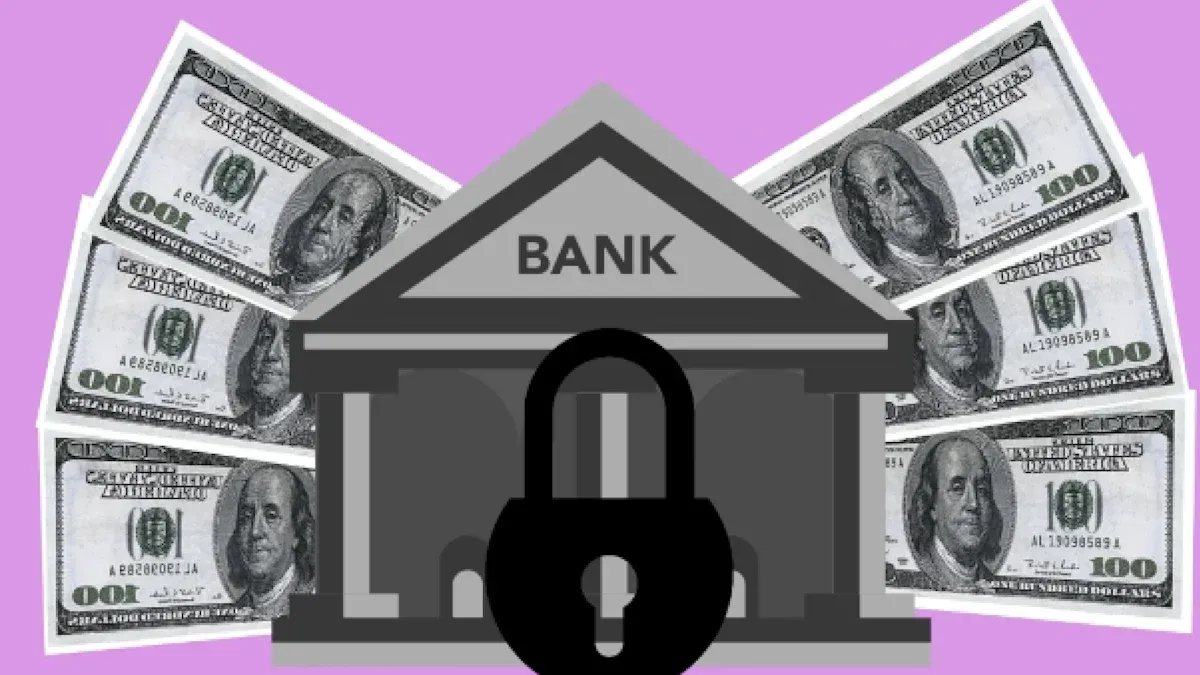- EasyCard
- Trade
- Help
- Announcement
- Academy
- SWIFT Code
- Iban Number
- Referral
- Customer Service
- Blog
- Creator
How to Identify Branch Codes? Comparing Bank of China with Other Banks

Image Source: unsplash
When managing daily finances or making transfers, you often need to enter a branch code. In fact, Bank of China’s branch codes are distinctly different from those of other banks. Correctly identifying branch codes can prevent transfer errors and ensure fund security. By mastering a few simple methods, you can easily distinguish the branch codes of major banks.
Key Points
- A branch code is a three-digit number used by banks to identify different branches, ensuring funds are accurately transferred to the designated account when paired with the bank code.
- Bank of China (Hong Kong)’s bank code is 012, with each branch having a unique three-digit branch code, facilitating quick identification of branch locations.
- Other banks like HSBC (004), Hang Seng (024), Bank of East Asia (015), and Standard Chartered (003) also use a similar three-digit branch code structure, while virtual banks often use 000 or 001 as their branch code.
- You can find branch codes via bank websites, bank statements, customer service hotlines, or by inquiring in person at branches to ensure accurate information.
- When transferring funds or setting up auto-debits, always verify the bank code and branch code to avoid transferring funds to the wrong account, ensuring fund security.
What is a Branch Code?
Definition
When handling bank transfers or opening accounts, you often encounter the term “branch code.” A branch code is a set of numbers used to identify a bank branch. Each bank has its own bank code, and every branch has a unique branch code. According to relevant literature, bank codes and branch codes play critical roles in daily transfer transactions. The bank code identifies the banking institution, while the branch code ensures funds are accurately transferred to the designated account. By entering the correct branch code, the bank can process your transaction accurately.
Uses
You will need a branch code in the following situations:
- Making local or cross-border bank transfers
- Setting up automatic transfers or auto-debits
- Receiving salaries or other payments
- Opening a new bank account
Branch codes help banks distinguish between branches, ensuring your funds are not transferred to the wrong place. You often need to enter these codes when filling out bank forms or using online banking.
Tip: When setting up automatic transfers, remember to verify the branch code to avoid funds being directed to the wrong account.
Structure
A branch code typically consists of three digits. For example, Bank of China (Hong Kong)’s branch codes are usually three digits, such as “012.” You will see the bank code and branch code together, for instance, “012-123,” where the first part is the bank code and the second is the branch code. This structure allows you to quickly identify which bank and branch it refers to. By remembering this format, you can easily find and enter the correct branch code.
Bank of China Branch Codes

Image Source: pexels
Format
When processing bank transfers, you often see a combination of Bank of China’s bank code and branch code. Bank of China (Hong Kong)’s bank code is 012. Each branch has a unique three-digit branch code. You will see this format: “012-XXX,” where “012” represents Bank of China (Hong Kong), and “XXX” is the specific branch code. For example, the head office’s branch code might be “012-101,” while the Mong Kok branch could be “012-238.” This structure allows you to identify the bank and branch at a glance.
Tip: When filling out transfer details, remember to enter both the bank code and branch code to ensure the bank processes your transaction accurately.
Range
Bank of China’s branch codes cover all Bank of China (Hong Kong) branches across Hong Kong. Each branch has a unique three-digit code, typically ranging from 101 to 999. For instance, if you open an account at the Central branch, the branch code might be “012-157”; at the Sha Tin branch, it could be “012-238.” These codes are non-repeating, ensuring each branch is uniquely identified. By knowing the branch code, you can accurately locate the corresponding branch.
Lookup Methods
You have several ways to look up Bank of China’s branch codes:
- You can log into the Bank of China (Hong Kong) official website and visit the “Branches and ATMs” page to quickly find the branch code you need.
- You can check your bank statement, which usually lists the branch code associated with your account.
- You can call the Bank of China (Hong Kong) customer service hotline to inquire about branch codes.
- You can also visit a branch in person and ask staff, who will provide the correct branch code.
Note: When making transfers or setting up auto-debits, you must enter the correct Bank of China bank and branch codes. This prevents funds from being transferred to the wrong branch, ensuring your funds’ security.
By using these inquiry methods effectively, you can easily obtain Bank of China’s branch codes, making account opening, transfers, or receiving payments more convenient.
Other Banks’ Branch Codes
HSBC
One of the most common banks in Hong Kong is HSBC. HSBC’s bank code is 004. Each branch has a unique three-digit branch code. For example, if you open an account at the Central head office, the branch code might be “004-400.” At the Mong Kok branch, it could be “004-600.” You just need to remember that “004” represents HSBC, followed by a three-digit branch code.
Hang Seng
Hang Seng Bank’s bank code is 024. The branch code varies by location. For instance, at the Causeway Bay branch, the branch code might be “024-382.” At the Sha Tin branch, it could be “024-385.” You can identify Hang Seng Bank by the “024” prefix.
Bank of East Asia
Bank of East Asia’s bank code is 015. When opening an account with Bank of East Asia, the branch code is also three digits. For example, at the Kowloon Bay branch, the branch code might be “015-543.” At the Central branch, it could be “015-001.” By entering the correct bank and branch codes, the bank can process your transaction accurately.
Standard Chartered
Standard Chartered Bank’s bank code is 003. When opening an account with Standard Chartered, the branch code is also three digits. For example, at the Tsim Sha Tsui branch, the branch code might be “003-391.” At the Wan Chai branch, it could be “003-404.” By verifying the bank and branch codes, you can avoid transfer errors.
Virtual Banks
You can also choose virtual banks in Hong Kong. Virtual banks have their own bank codes. For example, ZA Bank’s bank code is ZA (0036), and Mox Bank’s bank code is Mox (0037). Virtual banks often use “000” or “001” as a unified branch code. When using virtual banks, it’s recommended to check the official website to ensure you enter the correct branch code.
Comparison Highlights
You can refer to the table below to quickly distinguish the branch code formats of major banks:
| Bank Name | Bank Code | Branch Code Examples | Identification Key |
|---|---|---|---|
| HSBC | 004 | 400, 600 | 3-digit bank code + 3-digit branch code |
| Hang Seng | 024 | 382, 385 | 3-digit bank code + 3-digit branch code |
| Bank of East Asia | 015 | 543, 001 | 3-digit bank code + 3-digit branch code |
| Standard Chartered | 003 | 391, 404 | 3-digit bank code + 3-digit branch code |
| ZA Bank | 036 | 000 | Virtual bank, often uses 000 or 001 |
| Mox Bank | 037 | 000 | Virtual bank, often uses 000 or 001 |
Tip: When filling out bank details, remember to verify both the bank code and branch code. This ensures fund security and reduces transfer errors.
Methods to Look Up Branch Codes

Image Source: pexels
Official Website
You can directly log into the official websites of major Hong Kong banks to look up branch codes. Most banks list detailed information about all branches, including addresses, phone numbers, and branch codes, on their “Branch Network” or “Service Locations” pages. For example, banks like Bank of China (Hong Kong), HSBC, and Hang Seng offer branch lookup tools. By entering a region or branch name, the system will display the correct branch code. This method is the most direct and provides the most accurate information.
Tip: When looking up branch codes, prioritize using the bank’s official website, as it offers the most up-to-date information, preventing errors due to outdated data.
Customer Service
You can also call the bank’s customer service hotline to inquire about branch codes. Bank staff will provide the correct branch code based on your account details. This method is suitable when you can’t find branch information online or have doubts about the branch code. You can ask directly to ensure the information is accurate.
Bank Statement
Your monthly bank statement typically lists the branch code associated with your account. You can find this information in the account details section of the statement. This method is simple and convenient, especially if you already have a bank account and only need to verify existing details.
Other Channels
You can also check branch codes through the Hong Kong Interbank Clearing Limited (HKICL) website. Some banks’ online banking platforms or mobile apps also display branch codes. Visiting a branch in person and asking staff is another way to obtain accurate information.
Note: When making transfers or remittances, you must accurately enter the bank code and branch code. Incorrect details may result in funds being transferred to the wrong account, potentially leading to financial loss. For example, with a USD 1,000 transfer, entering the wrong branch code could make it difficult for the bank to recover the funds. You should double-check to protect your funds.
You now know how to distinguish Bank of China’s branch codes from those of other banks. You can use official websites, bank statements, or customer service to find accurate information. Remember to verify the branch code before each transfer to prevent funds from being misdirected.
Tip: Make good use of official resources to ensure every financial operation is accurate and error-free.
FAQ
What’s the difference between a branch code and a bank code?
A branch code identifies a bank’s branch, while a bank code represents the entire bank. Entering the correct combination allows the bank to process your transaction accurately.
Where can I find my branch code?
You can find it on the bank’s official website, bank statement, online banking platform, or by calling customer service. These methods help you quickly obtain the correct branch code.
What happens if I enter the wrong branch code?
Entering the wrong branch code may result in funds being transferred to the wrong account. The bank may not be able to recover the funds, especially for interbank transfers or those involving USD, leading to potentially greater losses.
Are virtual banks’ branch codes different from traditional banks?
Virtual banks typically use a single branch code, such as “000” or “001.” When using virtual banks, check the official website to ensure accurate information.
Is a branch code always required for transfers to other banks?
For interbank transfers, you must provide the branch code. This ensures the bank processes funds accurately, allowing smooth receipt of USD or other foreign currency transfers.
Bank codes ensure accurate transfers, but incorrect codes risk fund loss, while high cross-border remittance fees, complex currency exchanges, and limited flexible savings options restrict fund usage. BiyaPay’s all-in-one platform enables real-time US and HK stock trading without complex bank codes, managing global funds with one account. Remittance fees are as low as 0.5%, covering 190+ countries with same-day transfers. The flexible savings product yields a 5.48% annualized return, with daily interest credited automatically and withdrawals anytime, supporting 30+ fiat and 200+ cryptocurrencies, secured by KYC.
Try BiyaPay now to start your global investment journey! Join BiyaPay today at BiyaPay for efficient fund management and steady returns!
*This article is provided for general information purposes and does not constitute legal, tax or other professional advice from BiyaPay or its subsidiaries and its affiliates, and it is not intended as a substitute for obtaining advice from a financial advisor or any other professional.
We make no representations, warranties or warranties, express or implied, as to the accuracy, completeness or timeliness of the contents of this publication.




Contact Us
Company and Team
BiyaPay Products
Customer Services
is a broker-dealer registered with the U.S. Securities and Exchange Commission (SEC) (No.: 802-127417), member of the Financial Industry Regulatory Authority (FINRA) (CRD: 325027), member of the Securities Investor Protection Corporation (SIPC), and regulated by FINRA and SEC.
registered with the US Financial Crimes Enforcement Network (FinCEN), as a Money Services Business (MSB), registration number: 31000218637349, and regulated by FinCEN.
registered as Financial Service Provider (FSP number: FSP1007221) in New Zealand, and is a member of the Financial Dispute Resolution Scheme, a New Zealand independent dispute resolution service provider.




















